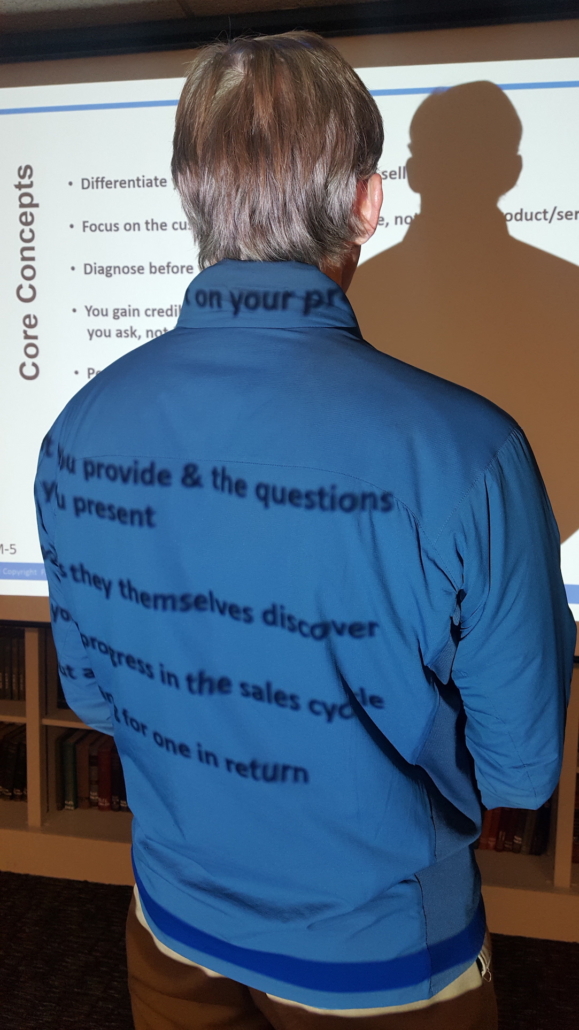As we approach the end of 2019, it’s time to look forward to the year ahead—starting with an assessment of your sales team’s performance over the past year. How did they do? Where do the need to improve?
More importantly, how do you measure their performance so you can answer those questions?
To remove the subjectivity and help you take a quantitative approach in evaluating your team, we’ve developed a list of questions that get at the answers. Use the questions to distinguish the producers from the laggards. And use these questions to determine which skills your salespeople need to improve on in order to meet and exceed goals.
Also see if you can match the question posed with the corresponding sales skill. (You’ll find the answers at the end of this article.)
Questions for quantitatively measuring sales performance:
- How many of the qualified opportunities in your current sales pipeline were initiated by the seller?
- What title(s) most commonly appears in the field for primary point of contact? Is that a decision maker’s title?
- How well matched are your company’s product or service capabilities with the prospect’s business objectives?
- What value (outside of product/price) will the prospect’s organization be able to identify while working with your company?
- How much research does a prospect do before engaging with a salesperson?
- Who on your sales team held the margin line in the negotiations, and who caved to the buyer’s pressure?
In addition to answering these questions, also evaluate your team individually. How well can the individuals on your teams execute each skill? By using the questions above, managers can identify who has which skills and where improvement is needed. This is how your qualitative analysis of skills can be analyzed in relation to the quantitative assessment.
Here’s an example of the kind of insight you can gain: We worked with a company that calculated the cost of every sales call to be $400.00. They discovered that many of the calls were to prospects who would never produce enough revenue to cover the cost of the calls made. The managers were then tasked to analyze how well the reps could execute each step, and then identify where coaching was needed. As a result, the reps’ overall skills improved, the amount of time spent on the wrong prospects was reduced, and revenue results increased with fewer overall calls being made. In essence, the focus is on the quality of the calls versus the quantity of calls conducted. All because they took a quantitative approach using these questions.
And as promised, here are the skills that match each question above: 1) New Business Development 2) Accessing Key Players 3) Qualification and Positioning 4) Establishing Value 5) Opportunity Management/Forecasting 6) Negotiation.
As we approach the end of 2019, it’s time to look forward to the year ahead—starting with an assessment of your sales team’s performance over the past year. How did they do? Where do the need to improve?
More importantly, how do you measure their performance so you can answer those questions?
To remove the subjectivity and help you take a quantitative approach in evaluating your team, we’ve developed a list of questions that get at the answers. Use the questions to distinguish the producers from the laggards. And use these questions to determine which skills your salespeople need to improve on in order to meet and exceed goals.
Also see if you can match the question posed with the corresponding sales skill. (You’ll find the answers at the end of this article.)
Questions for quantitatively measuring sales performance:
- How many of the qualified opportunities in your current sales pipeline were initiated by the seller?
- What title(s) most commonly appears in the field for primary point of contact? Is that a decision maker’s title?
- How well matched are your company’s product or service capabilities with the prospect’s business objectives?
- What value (outside of product/price) will the prospect’s organization be able to identify while working with your company?
- How much research does a prospect do before engaging with a salesperson?
- Who on your sales team held the margin line in the negotiations, and who caved to the buyer’s pressure?
In addition to answering these questions, also evaluate your team individually. How well can the individuals on your teams execute each skill? By using the questions above, managers can identify who has which skills and where improvement is needed. This is how your qualitative analysis of skills can be analyzed in relation to the quantitative assessment.
Here’s an example of the kind of insight you can gain: We worked with a company that calculated the cost of every sales call to be $400.00. They discovered that many of the calls were to prospects who would never produce enough revenue to cover the cost of the calls made. The managers were then tasked to analyze how well the reps could execute each step, and then identify where coaching was needed. As a result, the reps’ overall skills improved, the amount of time spent on the wrong prospects was reduced, and revenue results increased with fewer overall calls being made. In essence, the focus is on the quality of the calls versus the quantity of calls conducted. All because they took a quantitative approach using these questions.
And as promised, here are the skills that match each question above: 1) New Business Development 2) Accessing Key Players 3) Qualification and Positioning 4) Establishing Value 5) Opportunity Management/Forecasting 6) Negotiation.
zp8497586rq



 Formerly, an elevator pitch was a short summary designed to describe your company or product. As the name implies, it should be short enough that it can be delivered during the span of an elevator ride.
Formerly, an elevator pitch was a short summary designed to describe your company or product. As the name implies, it should be short enough that it can be delivered during the span of an elevator ride.
 John and the FSS team will be in Rome to work with a global commercial translation services company in the first week of February. Italy will be the 17th country that we have worked in, helping our customers to drive revenue in their approach to the global marketplace.
John and the FSS team will be in Rome to work with a global commercial translation services company in the first week of February. Italy will be the 17th country that we have worked in, helping our customers to drive revenue in their approach to the global marketplace. About 45 minutes after the Torrey Pines High School (TPHS, San Diego, CA) Girls Volleyball team beat Marin Catholic for the California State Title (CIF), the squad walked back into the lobby of the college gym where the match was held. The families of the players, including my wife and me, were waiting there to greet the girls following their straight sets victory on November 23. Shortly after their entrance, the tears of joy began to flow from players, Coaches and parents, as the energy in that foyer was so positive, loving, fulfilling and FUN!
About 45 minutes after the Torrey Pines High School (TPHS, San Diego, CA) Girls Volleyball team beat Marin Catholic for the California State Title (CIF), the squad walked back into the lobby of the college gym where the match was held. The families of the players, including my wife and me, were waiting there to greet the girls following their straight sets victory on November 23. Shortly after their entrance, the tears of joy began to flow from players, Coaches and parents, as the energy in that foyer was so positive, loving, fulfilling and FUN!  Attending an industry conference is a costly endeavor: various factors such as transportation, lodging & meals can add up quickly. Add to that your time and effort, and well, that’s quite an investment! If you are planning to attend a conference this year such as
Attending an industry conference is a costly endeavor: various factors such as transportation, lodging & meals can add up quickly. Add to that your time and effort, and well, that’s quite an investment! If you are planning to attend a conference this year such as 